
Revised April 12, 2024
As required by O.C.G.A. § 25-9-6 and GPSC Rule 515-9-4-.14, it is the responsibility of the Utilities Protection Center, Inc., d.b.a. Georgia 811, to develop a policy defining “Sufficient Particularity” and identifying when “White Lining” is required. This policy will assist all underground facility owners, facility operators and locators in the state by providing more detailed information on the extent of any proposed excavation. It will also assist excavators in their efforts to increase productivity by allowing for more efficient use of the existing locating resources within the state.
Sufficient Particularity means providing a detailed description of the specific tract or parcel of land where the design request, blasting, or excavating will occur, allowing the facility owner or operator to identify the exact location. It also directs excavators as to how specific they must be in describing their area of proposed excavation so as to avoid confusion with facility owners and locators.
Sufficient Particularity is achieved by either describing with words (known also as Verbal White Lining) or white lining the excavation area (known also as Physical White Lining). This includes clearly and concisely defining boundaries of the area of excavation. In the event the location upon which the blasting or excavating is to take place cannot be described with sufficient particularity, the person proposing the blasting or excavating shall mark the route or boundary of the site of the proposed blasting or excavating.
White Lining means marking the route of the excavation with white paint, flags, stakes, or a combination of such methods to outline the dig site prior to notifying Georgia 811 and before the locator arrives on the job (O.C.G.A. § 25-9-3). GPSC 515-9-4-.14 describes the requirements related to White Lining: https://rules.sos.state.ga.us/GAC/515-9-4-.14
When white lining, the following should be included in the locate request:
To prevent unclear locate instructions, it is advisable to either white line or describe the area of excavation. In the event both methods of sufficient particularity are used they must be consistent otherwise a new ticket may be required.
The use of GPS coordinates is considered sufficient particularity only if accompanied by white lining or a clear description of the area of excavation.
To assist in better defining the extent of excavation, each address can be subdivided into four quadrants – Front Left, Front Right, Back Left, and Back Right – or four sides – Entire Back, Entire Front, Entire Left, Entire Right. All areas will be identified as if standing at the centerline of the street in front of the requested address, at the curb, facing the property in question. The following are examples of how properties can be divided:
Quadrants:
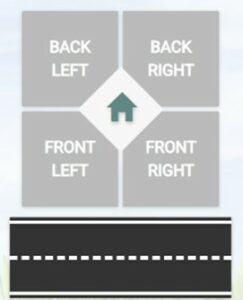
Sides:

Example 1.1
Work Type: Stump grinding
Dig Site Address: 123 Main Street
Locate Instructions: Locate a 10-foot radius around the tree stump in the front left quadrant.

Example 1.2
Work Type: Stump grinding
Dig Site Address: 123 Main Street
Locate Instructions: Locate a 10-foot radius around the tree stump in the front left quadrant.
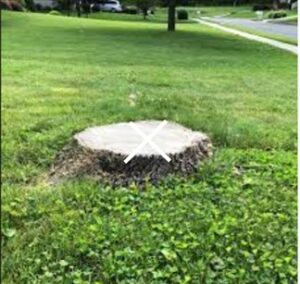
Example 2.1
Work Type: Installing a fence
Dig Site Address: 20 Maple Street
Locate Instructions: Locate the back and both sides of the property.
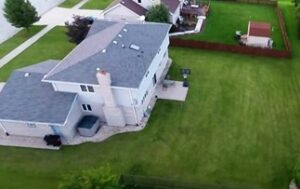
Example 2.2
Work Type: Installing a fence
Dig Site Address: 20 Maple Street
Locate Instructions: Locate 20 feet in all directions along the white lined area in the back, right, and left property boundaries.
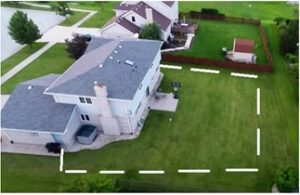

Example 3.2
Work Type: Install curb and gutter
Dig Site Address: 120 Main Street
Locate Instructions: Locate the white lined area in the front of the property.

Example 4.1
Work Type: Paving roadway
Dig Site Address: Elm Street
Locate Instructions: Locate a 20-foot offset from the edge of the roadway on both sides of the road going into the properties from address 253 to 291 Elm Street.
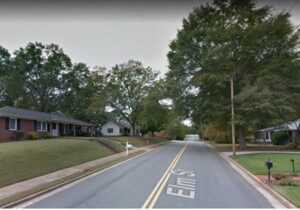
Example 4.2
Work Type: Paving roadway
Dig Site Address: Elm Street
Locate Instructions: Locate the 2 white lined areas on both sides of the road from address 253 to 291 Elm Street.
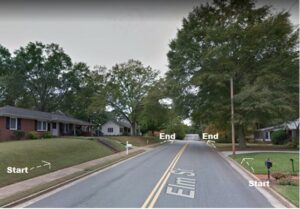
Example 5.1
Work Type: Installing anchors and guy-wires around poles
Dig Site Address: 78 Orchard Drive
Locate Instructions: Locate a 50-foot radius around 4 poles starting at pole #25 in the rear of 78 Orchard Drive and going northeast along the power transmission line for 1,800 feet ending at pole #28.
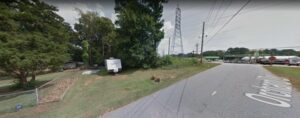
Example 5.2
Work Type: Installing anchors and guy-wires around poles
Dig Site Address: 78 Orchard Drive
Locate Instructions: Locate a 50-foot radius around the 4 poles marked with white paint starting at the pole in the rear of 78 Orchard Drive and going northeast along the power transmission line for 1,800 feet.
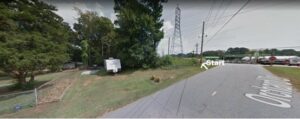
Example 6.1
Work Type: Installing guy-wires around power poles
Dig Site Address: 84 Main Street
Locate Instructions: Locate a 25-foot radius around the 8 power poles on the east side of Main Street in front of the park.

Example 6.2
Work Type: Installing guy-wires around power poles
Dig Site Address: 84 Main Street
Locate Instructions: Locate a 25-foot radius around the 8 power poles marked with white paint on the east side of Main Street in front of the park.
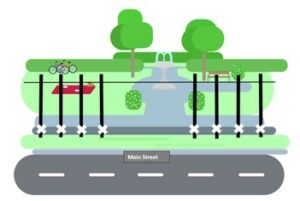
Example 7.1
Work Type: Install acceleration and deceleration lanes
Dig Site Address: 3333 Buford Drive
Locate Instructions: Locate for 25ft in all directions of the entrance to the new shopping center located on
Buford Drive.
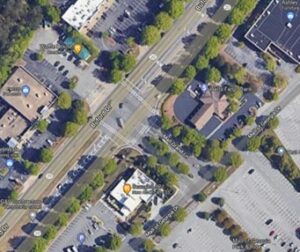
Example 7.2
Work Type: Install acceleration and deceleration lanes
Dig Site Address: 3333 Buford Drive
Locate Instructions: Locate a 25-foot radius around the 2 white lined areas on both sides of the entrance to the new shopping center on Buford Drive.
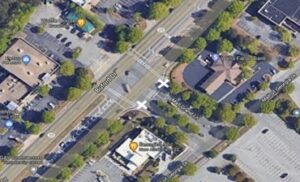
Example 8.1
Work Type: Install a power main
Dig Site Address: Dixie Avenue
Locate Instructions: Locate a 10-foot offset from the edge of the roadway on both sides of Dixie Avenue from Lombardy Way to Academy Street.
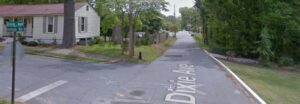
Example 8.2
Work Type: Install a power main
Dig Site Address: Dixie Avenue
Locate Instructions: Locate a 10-foot radius around the 2 white painted areas on both sides of Dixie Avenue within 50 feet of Lombardy Way.
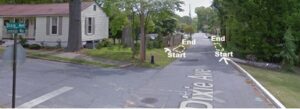
Example 9.1
Work Type: Installing fiber main line
Dig Site Address: I-75 N
Locate Instructions: Locate a 15-foot offset from the edge of the roadway on both sides of I-75 northbound from mile marker 308 to 309.

Example 9.2
Work Type: Installing fiber main line
Dig Site Address: I-75 N
Locate Instructions: Locate a 15-foot radius around the 2 white lined areas on the east side of I-75 northbound between mile markers 308 and 309.
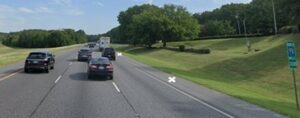
Example 10.1
Work Type: Installing water meters
Dig Site Address: Church Street
Locate Instructions: Locate a 15-foot offset from the edge of the roadway along the address side of the road from 2010 to 2030 Church Street.
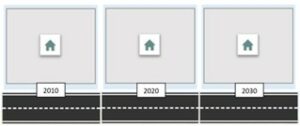
Example 10.2
Work Type: Installing water meters
Dig Site Address: Church Street
Locate Instructions: Locate a 15-foot radius around the 3 white flagged areas at the following addresses: 1 area in front of 2010, 1 area in front of 2020, and 1 area in front of 2030 Church Street.

If the locate instructions of the original ticket were defined by white lining and those marks are no longer visible, then the excavator must remark the boundaries of excavation using white paint, stakes and/or flags prior to submitting an Additional Request or Updating the ticket as required by O.C.G.A. §25-9-6(b).
If the original ticket describes the area of excavation with sufficient particularity using verbal white lining exclusively, an Additional Request or Update requires no white lining.